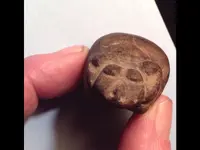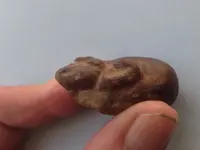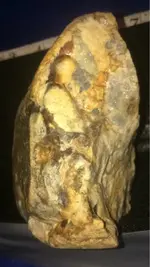I'm going to offer the suggestion that this article explains why you are seeing what you are seeing, and why others are telling you those are simply rocks. They are simply rocks. What you're experiencing is fairly common, and nothing to be ashamed of. I've always enjoyed seeing faces in clouds. Also, keep in mind, if a native wished to make an effigy figure, their artistic abilities were no less developed then our own, or folks from any other culture. So,,their effigies will be artistic and very obvious works of man. If one were to think these rocks are the best a native could do, and are actual effigies, it's almost insulting to all prehistoric Native American cultures to think these rocks are the best the artistic members of their band/tribe was capable of.
Why It's Perfectly Normal to See Jesus in Toast - NBC News
(From the above study: "The results revealed that priming people to look for identifiable objects in random patterns is bound to create a few hits. The participants reported seeing faces 34 percent of the time and letters 38 percent of the time, despite there being none in the images they saw.
Because the researchers asked participants about letters as well as faces, they were able to tease out differences in brain activity associated with mistaken identification of a letter and those associated with mistaken identification of faces. They found those differences in the fusiform face area (FFA), a small region on the side of the brain, behind the ear. This region has long been known to be involved in the recognition of faces, though recent research suggests that it helps people identify the differences between any objects of expertise. A birdwatcher, for example, might use the FFA to tell the difference between a sparrow and a wren.
The finding that the FFA is involved specifically in face pareidolia fits with previous studies, the researchers wrote. It also suggests that the region doesn't just activate in response to actual faces; it also appears to activate in response to people's belief that they have seen a face. In other words, the researchers wrote, people's expectations may have led their brains to find fuzzy patterns that looked face-like, creating a false impression."
(Note: pay attention to the last paragraph above because that is what is going on in this thread and that is why the poster believes his rocks are somehow more then rocks, even though they are clearly no more then rocks.)
----------------------------------------- ------------------------------
i've trotted this effigy out a few times here. My apologies if some are sick of seeing it. But, a good example of the artistry displayed in a small sandstone effigy. These people were artists. The rocks you show here are simply rocks. Real Native Americans were just as good at sculpturing rock as anyone else. If you have to rely 100% on your imagination in interpreting the rock, then that is all it is, a rock, not an effigy. Can you see where the one below leaves absolutely no doubt it was made by man, while your rocks leave all the doubt in the world?
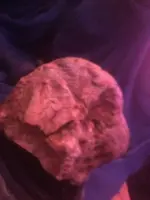 ATTACH]1108336[/ATTACH]
ATTACH]1108336[/ATTACH]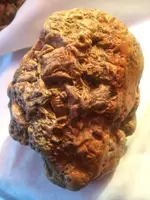

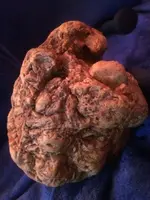 View attachment 1108370
View attachment 1108370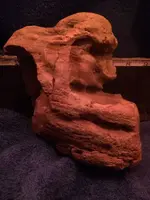
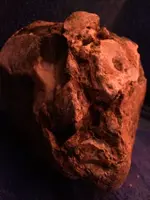
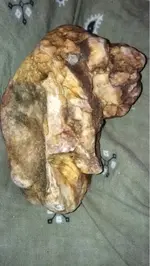
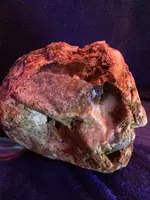
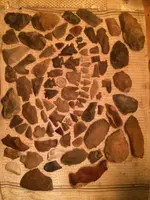
 ATTACH]1108336[/ATTACH]
ATTACH]1108336[/ATTACH]

 View attachment 1108370
View attachment 1108370









